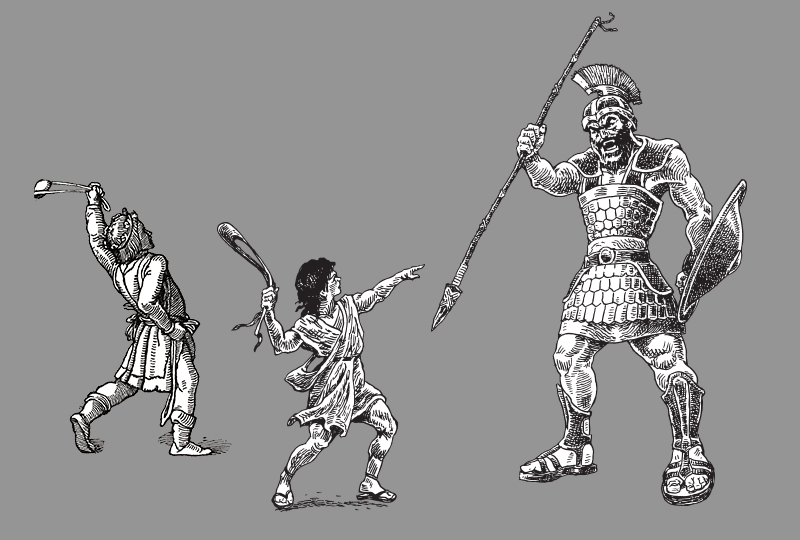On Memorial Day 2020 in America, a rogue officer of the law dug his knee into the neck of George Floyd, and the world will never be the same.
That single act of knee meeting neck has toppled monuments of historic standing and challenged the status quo across the globe.
Yesterday’s enshrined “heroes” overnight turned into today’s enemies of the people.
Their downgrading was swift and merciless, literally being dragged to the ground amid a defiant blend of retribution, emancipation, and celebration that the once-mighty had finally fallen.
Call it A Great Awakening.
Or call it an army of Davids sling-shooting centuries’ worth of Goliaths who have cast a giant—often dark—shadow over our history.
BONFIRE OF RAGE
The simple fact is, a bonfire of rage and retribution is searing the national (and international) psyche, and the flames’ ferocity doesn’t look likely to flicker out anytime soon.
The fire has vanquished statues memorializing a pantheon of icons, from presidents of the United States to professional sports club owners, from legendary military figures to a past mayor of a major American city.
The roaring fire even has shone a different, darker light on the 1492 European explorer credited with “discovering” America (despite its already being settled by millions of indigenous peoples).
The message that is reverberating couldn’t be louder or clearer: Nothing is sacred anymore as long as oppression and unprovoked state violence against people of color continues to go unpunished.
HIGH-VALUE TARGETS
The fire’s white hot flame is like a heat-seeking missile drawn to high-value targets: it zeroes in on the legacy of a long-gone Hollywood movie star—and rabid racist—igniting a chorus of cries that demand his name be stricken as the identity of a major airport in Southern California.
The flame has lit a fire under Black student-athletes who rose up as one, to condemn a Caucasian student at their midwestern university for mocking George Floyd’s death in a perverse Tweet. The athletes vowed not to play their sports until policies are put in place by their school to harshly deal with the racist student and others like him.
The fire has scorched Facebook CEO Mark Zuckerberg, whose company lost $56 billion in market value, and who personally lost $7 billion in paper wealth—in a single day—as major advertisers yanked their business to protest the platform’s laissez-faire oversight of hate speech on its pages.
GEORGE WASHINGTON’S ‘PROPERTY’
Legions of people believe the social justice awareness and activism that are driving all these watershed activities are long overdue, reaching back to the founding of the country. Indeed, we’ve even been reminded that George Washington and wife Martha owned 300 Blacks as property.
The inevitable question becomes, where does it end? Does any historical figure—no matter how beloved and deified—not have skeletons in their closet? Should all of them be scandalized and demonized as not worthy of memorialization?
Who is setting the agenda for this insurgency?
I’ve been listening to all sides of the heated discussions about equality, inclusion and diversity. As usual, whatever solutions are attainable can be found in the middle, not at the extremes.
When it comes to how racism is defined and perceived, and who should be classified as racist, we often are too quick to reach snap judgments, based on nothing more than slogans and phrases that become rallying cries, yet don’t always move the ball toward the goal.
MULTI-RACIAL FUTURE
Neither is this a passing fad we’re witnessing. It foretells an increasingly multi-racial America that will look truer to its melting pot heritage a generation from now.
Consider this: By the time those being born today turn 25 years old, it’s projected that the demographic group labeled “non-Hispanic Whites” by the U.S. Census will comprise less than 50% of the United States.
A quarter-century from now, the people who have been America’s majority since its own birth, in 1776, will know how it feels to be in the minority.
MISTAKEN IDENTITY
There have been monuments forcibly removed, by dint of mob mentality, that turned out to be cases of mistaken identity.
The memorials vandalized were thought to be Confederate figures but in fact were heroes of the Union army. Such impulsive, irrational destruction undermines efforts of the people in this fight for the right reasons and gives ammunition to those who question the sincerity of the movement.
In the suburbs of New York City, a pharmaceutical executive speaking at a high school graduation utters words that have been deemed by arbiters of language as incendiary— “all lives matter”—and the school superintendent feels compelled to apologize to parents who were offended.
Why? Because it’s been decided by invisible but powerful forces that, somehow, saying “all lives matter” diminishes the plight of people of color.
CONSIDER THE CONTEXT
What’s left out of that across-the-board condemnation of three little words is the context in which they are said. It’s not always with the same intent. Let’s not assume if we don’t like what is said that the person said something wrong. Maybe we just heard it wrong. Let’s not be so quick to condemn that which we don’t always clearly understand.
Ironically, in preaching tolerance, we find ourselves being less than tolerant of people on the same side of social justice as we are on. That’s not helpful.
Social satirist Bill Maher made that point recently on his HBO show. We should be ”lifting people up,” says Maher, “instead of slapping people down who are trying to say, ‘I’m on your side.’” The lesson here is think for yourself. What’s important is what’s in your heart, not what’s posted on your Instagram.
DOUBLE-EDGED SWORD
Social media can be a great catalyst for change in its efficient and far-reaching ability to communicate messages that like-minded people can gather around—like a bonfire.
It’s a double-edged sword, though. If social media manipulators decide to tell us that today we must make a statement by posting a certain meme on our Instagram, going along with that is a nice gesture—and it makes a certain statement—but let’s not mistake it for transformative action. It’s passive activism.
Following the crowd by posting what you’re instructed to, by an influencer you don’t even know, does not make you more anti-racist than a fair-minded person who doesn’t find that form of protest meaningful.
BANISHED BRANDS
Several major food marketers have declared that they would banish evergreen brands such as Aunt Jemima maple syrup, Uncle Ben’s rice, and Eskimo Fudge Pie. While the racist overtones of those logos are not in dispute, continuing to buy those products while they still are on shelves does not make someone a racist.
There are brands using other ethnicities besides people of color to sell their products, such as Quaker Oats cereal and Bubbies sauerkraut. Of course, the people displayed on those labels are not subservient stereotypes, as are the brand images of Black stereotypes being discontinued.
Positive, peaceful protesting—which abhors violence, looting, and wanton destruction of public or private property—is a great display of strength in numbers. But it’s a short hop from speaking your mind to setting guidelines for how others should speak their mind, or show their support for blindly and robotically following what someone decides is the preferred slogan or social media post du jour.
A MORE JUST SOCIETY
I know from my own extensive experience working with and mentoring Millennials that individualism is important to them. I encourage them to do what is right for them, not what is right by someone else’s standards. You can read more about that in my book Fisch Tales: The Making of a Millennial Baby Boomer (ForbesBooks, 2019).
There are lots of meaningful ways to help shape a more civil society and it’s Millennials (and the generations following) who need to lead the way. After all, it’s their future and their families and their quality of life that hang in the balance.
As Princeton professor Eddie Glaude puts it, this movement is not just about replacing symbols—whether it’s on a pedestal in a public square or on a bottle in your pantry—but about forging policies toward a more just society.
So, what about it, Millennials? Your turn to show us how it’s done—the right way. The American way.
Originally posted on Forbes.

